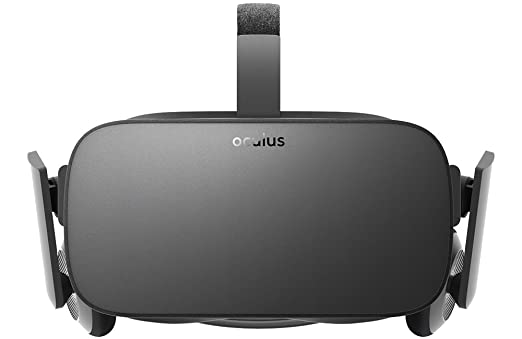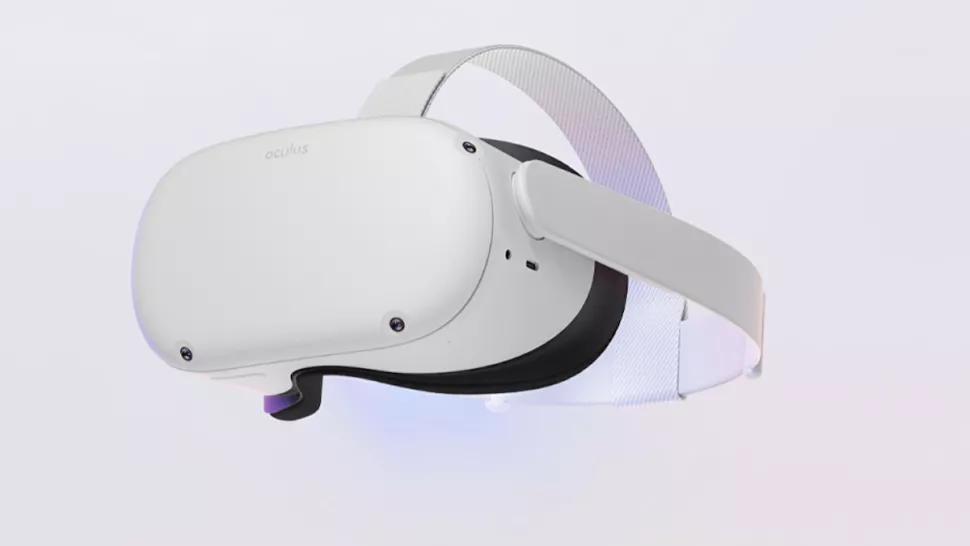Oculus Quest 2 vs Oculus Rift
When you compare the Oculus Rift to the Oculus Quest 2 you can see which VR Headset is better. Let's take a look of the comparison, and see which model of VR Headset out ontop.
What VR Headset is better?
The Oculus Rift and the Oculus Quest 2 are two virtual reality headsets that have very different specs. The Oculus Rift is a PC-based headset, while the Oculus Quest 2 is a standalone headset. While both headsets are great for gaming and other immersive experiences, they each have their pros and cons.
Let's start by looking at the specs of both headsets. The Oculus Rift has a field of view of 110 degrees and a resolution of 1080 x 1200 px. It also requires an Intel i3-6100 or AMD Ryzen 3 1200, FX4350 or greater CPU to run it properly, as well as an Nvidia GTX 1050Ti or AMD Radeon RX 470 or greater graphics card. Furthermore, it runs on Microsoft Windows operating system, supports room scale tracking with 360° tracking and has a refresh rate of 90 Hz.
On the other hand, the Oculus Quest 2 offers 97° field of view with 1832 x 1920 px resolution, running on an inbuilt Qualcomm Snapdragon XR2 processor running Android 10 operating system with 360° tracking support and 72Hz refresh rate.
Comparing these specifications reveals some major differences between the two devices; for instance, the higher resolution offered by the Quest 2 provides better visuals than what you'd get from the Rift's 1080 x 1200 pixels display. This makes it perfect for more demanding applications such as watching movies or playing games which require finer details to be seen clearly. Additionally, its Qualcomm Snapdragon XR2 processor is much more powerful than its counterpart in the Rift allowing users to enjoy smoother performance across all applications compared to what would be possible with its Intel/AMD processor counterpart used in he Rift which could lead to stuttering if not optimized correctly through software updates etc.. In terms of its field of view however - while still respectable compared to others -the rift offers 10° more wide angle coverage making it more suitable for those who want larger coverage area when using VR apps such as Google Earth etc... Another point worth noting here is that being able to use Room Scale feature found in both devices is great way for developers to enable users full body movement within apps without need additional hardware sensors spread around your living space (as was required earlier). Lastly but not least – refresh rate wise we see that while rifts’ 90 Hz gives slightly better fluidity when using VR compared to Quests’ 72 Hz this gap isn't huge enough necessarily justify one over another so this particular aspect boils down mostly user preference rather than technical superiority per se'.
Both devices offer great features depending on your individual needs; if you're looking for a device that can provide high quality visuals then you should go with the Quest 2 but if you prefer wider field of view then stick with he rift instead although – again - as mentioned above differences between them are quite small so difference might not be noticeable even after prolonged usage depending on type content/apps you plan use most frequently on either device...
Overall I enjoyed using both VR Headsets and felt that there were no major issues encountered during my testing period apart from few minor stutters related mainly due too software optimization issues rather than hardware limitations itself but other than that – I had no problems whatsoever with either headset & enjoyed them equally however if I had choose one out two then personally Id go he 'Quest 2' primarily because I like idea having all processing done onboard itself as opposed needing connect device external computer each time play plus fact fact hat higher resolution offered by 'Quest 2' make it good choice for any activity requiring finer details (e g watching movies videos etc..) plus bonus having ability access huge library content available via 'Oculus Store' directly without having manually download install programs PC make whole experience lot easier smoother overall so considering these factors combined together make me lean towards 'Quest 2' slightly more over its sibling in this case!
Specs comparison between the two VR Headsets
| Oculus Rift | Oculus Quest 2 | |
|---|---|---|
| Overview | ||
| Brand | Meta | Meta |
| Model Name | Rift | Quest 2 |
| Release Date | 2016 | 13102020 |
| Country of Origin | United States | United States |
| Category | PC VR | Standalone VR |
| Battery Life | 3 h | 3 h |
| Display | ||
| Field of View | 110° | 97° |
| Resolution | 1080 × 1200 px (per eye) | 1832 x 1920 px |
| Refresh Rate | 90 Hz | 72 Hz |
| Display Type | OLED | LCD |
| Minimum Requirements | ||
| Min. CPU Required | Intel i3-6100 or AMD Ryzen 3 1200, FX4350 or greater | |
| Min. Graphics Required | Nvidia GTX 1050Ti or AMD Radeon RX 470 or greater | |
| Min. RAM Required | 8 GB | |
| Operating Systems | Microsoft Windows | |
| Sizing | ||
| Weight | 470 g | 503 g |
| Dimensions | 184 × 114 × 89 mm | 192 x 102 x 143 mm |
| Features | ||
| Room Scale? | YES | YES |
| 360 Tracking? | YES | YES |
| Positional Tracking? | YES | |
| Front Camera? | No | |
| Eye Tracking? | No | |
| Usable with Glasses? | YES | YES |
| Cooling System | No | |
| Built in Headphones? | YES | |
| Built in Microphone? | YES | |
| Flip Visor? | No | |
| Voice Command? | YES | |
| IPD Adjustment? | YES | YES |
| Lens to Eye Adjustment? | YES | |
| USB? | YES | YES |
| MicroUSB? | No | |
| Display Port? | No | |
| Mini Display Port? | No | |
| HDMI? | YES | |
| MicroSD? | YES | |
| Bluetooth? | YES | |
| Wifi? | No | |

